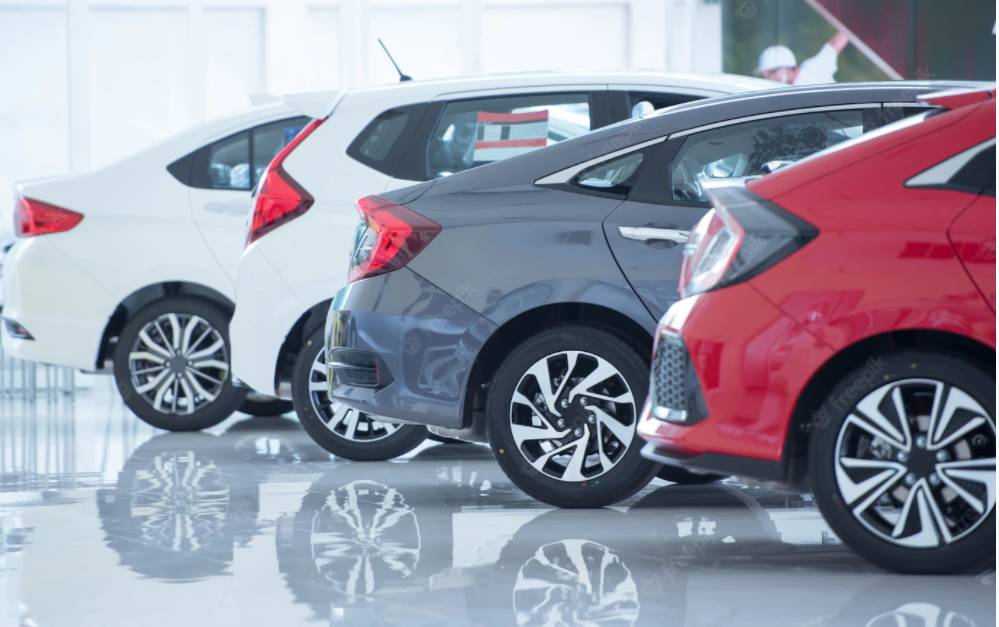Depending on your generation, the idea of a luxury car could mean anything these days – there was a time when a Ford Fiesta would have a single mirror and no heated rear window, and a Rolls-Royce would have electric windows, air conditioning and leather; now your Ford Fiesta has all of those things and the Rolls-Royce… well, it has LEDs in the roof.
So, it’s probably safest to assume by luxury, we mean ‘the expensive one’. The iPhone Pro Max of cars, rather than the SE. And if you want some creature comforts and a bit of bling to show off, buying your luxury car pre-owned isn’t a hedonistic option; it’s arguably showing more financial sense than the person who bought it before you.
You might expect loads of bare-bones hatchbacks in the secondhand market, but when looking at the wide range used cars for sale in the UK, drivers benefit from the popularity of premium and upmarket brands in Britain. Mercedes-Benz and Audi aren’t far behind Vauxhall and Ford in the sheer volume of cars you can choose from, and the variety of models and prices means there’s something for everyone.
So should you spend more on a more luxurious secondhand car? We think so – bought wisely, they won’t cost more to run. Remember to check the MOT history of any used cars you’re looking at, as it can tell you more than the seller may be letting on – or even knows, if they’re a dealer.
Five reasons why your next used car should be top of the range
1: Used car values never truly reflect the cost of options
Whether you’re shopping for a Peugeot or a Porsche, the taste and budget of the first buyer rarely has the same impact on residual values as it did on the new price. For example, a secondhand Porsche Cayman might look expensive when all your options are around £40,000 and a new one is £50,000 – but adding kit can easily push the new cost up 50%, so buying wisely means saving a huge amount on the spec you want.
This is even more marked as the cars get to around seven years old – look at Range Rover Evoques; the difference in price new between basing front-wheel drive, and high-spec all-wheel drive, was massive. Secondhand, it can be as low as a couple of thousand pounds for a spec that cost £20,000 more new.
2: Affluent owners may look after the cars better
It isn’t a rule, so much as a hope – but the idea that someone spending thousands on a carefully chosen and dreamed-of car will look after it with more care than a lease car seems reasonable. Look for privately owned examples with good, clean paintwork and a big history file at the older end of the market. Be warned, though, that any owner is at risk of dodgy repairs from accidents, so make sure you check the car’s accident history. For expensive, specialist or rare cars it could be worth paying for an independent inspection first.
3: Running costs may not be much worse
Yes, if you’ve been tempted by a Bentley Continental for Ford Fiesta money, you’re going to need a much bigger budget for repairs. But otherwise there is not a big difference in the servicing demands of a Premium Plus or S-Line trim, or 2.0-litre over 1.5-litre as they get older. With the exception of items such as spark plugs, or more complex timing belts, routine maintenance of a luxury car is unlikely to cost you much more. If you go for petrol over diesel, however, you may see a big increase in fuel costs. Many owners convert to LPG, which done well can be better for the environment as well.
4: Safety and convenience is usually much better
From the passenger and driver seats, luxury cars are usually bigger, and usually safer. They get the latest tech first, and year on year, they get improvements first too. This means that for features such as lane keeping, autonomous emergency braking or additional airbags your upmarket choice is also the safest choice. You’re also more likely to find electric seats with memory for more than one driver, keyless ignition and advanced air conditioning with zones for driver and passengers. Not all the tech is a good thing; generally once a car is over ten years old the built-in navigation can be difficult and expensive to keep up to date – if buying from a dealer ask for the maps to be updated as part of the sale, or for a discount if they can’t do it.
5: You’ll feel more pride in your car
It’s a small thing, but even when buying used your car is probably the most expensive thing you’ll buy other than where you live. So it should make you feel good – about how it drives, about how comfortable it is, and if it matters to you, how it looks to the rest of the world. A well-maintained premium car from a few years ago can be more validating than a basic-spec brand new one, particularly if you get a low-cost cherished number plate from DVLA to get rid of the age markers.
Are there any downsides to buying a used luxury car?
Naturally, like any car, there are specific problems you may want to keep an eye out for. When looking at more powerful models, check the service requirements first; some cars need expensive timing belt changes and other maintenance that is priced in line with the cost of the car, so you won’t want to buy one just before that big service is due. And you will want to be far more critical of the interior trim and gadgets – anything broken may cost considerably more, even secondhand, than an equivalent part on a basic model. Items such as electric seat switches generally last the life of the car, but if they’re damaged replacement won’t be cheap.
So, it’s harder to just spend money without putting a bit of work in shopping around. Chances are it’ll be worth it, though, as once you’ve found that dream car, you’ll soon fall in love with the comfort and convenience you get over the basic options.









